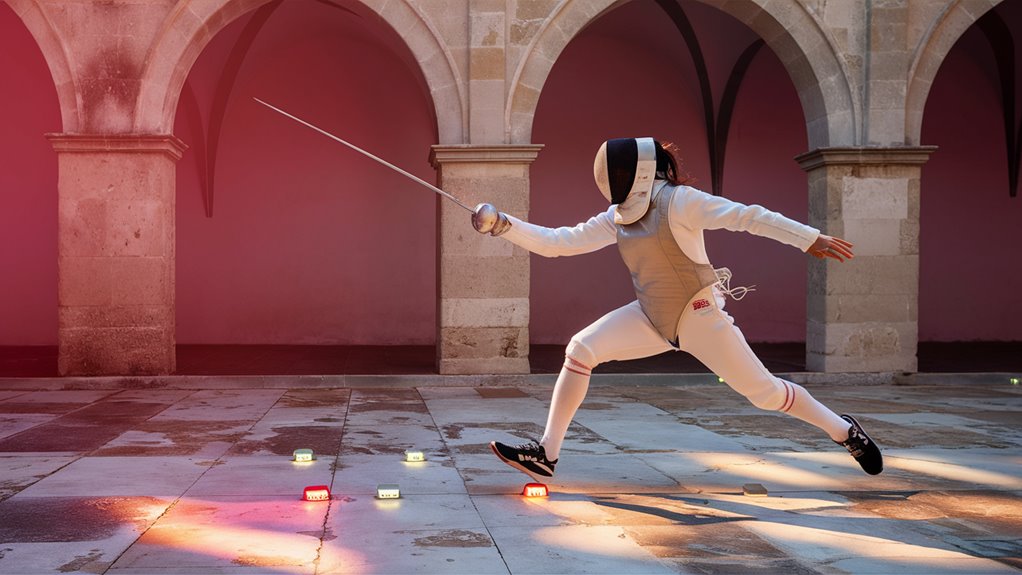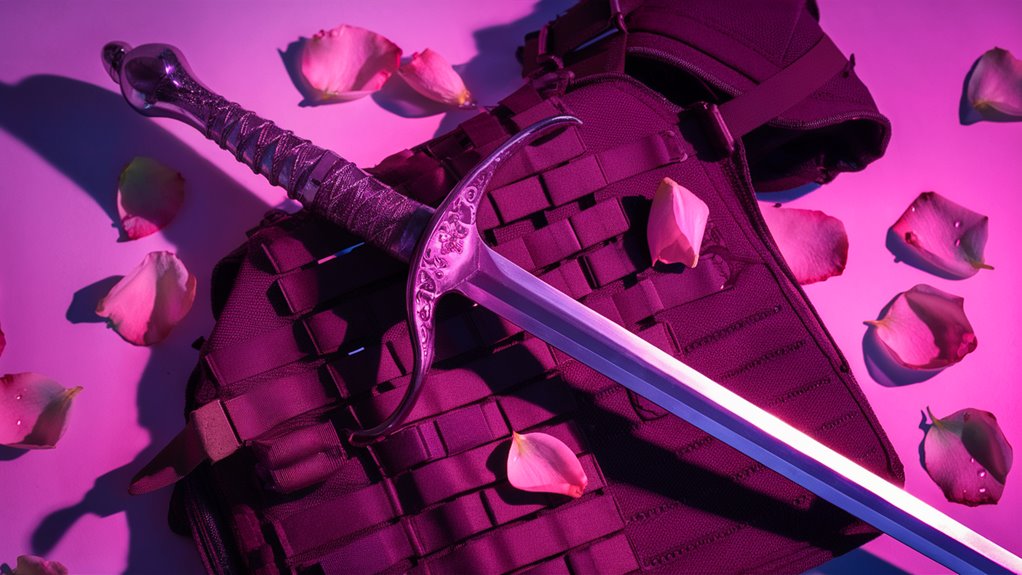
Rosehaze Renaissance: Reviving Classic Tactics With Modern Flair
Rosehaze Renaissance: A Revolutionary Tactical Gaming Evolution
*Rosehaze Renaissance* has redefined tactical gaming since its 2021 debut by masterfully blending *classic strategy elements* with *modern competitive mechanics*. The game’s innovative *three-phase turn structure* and *momentum points system* create a dynamic playing experience that appeals to both veterans and newcomers.
Core Gameplay Mechanics
The game’s standout feature, the *Role Matrix customization*, enables players to craft *hybrid units* while maintaining strategic depth through intricate *terrain mechanics* and *formation options*. This system has revolutionized competitive play, fostering diverse strategies from *Team Nexus’s hybrid rushing* techniques to Europe’s *control-focused meta*, resulting in a remarkable *35% increase in execution speed*.
Strategic Depth and Innovation
*Terrain interaction* and *unit formations* create layers of tactical complexity that reward skilled players. The game’s *momentum-based combat* system ensures each decision carries weight, while the *hybrid unit creation* mechanics allow for unprecedented strategic flexibility.
#
Frequently Asked Questions
Q: What makes Rosehaze Renaissance different from traditional tactical games?
A: Its unique combination of *three-phase turns*, *momentum points*, and *Role Matrix customization* sets it apart from conventional tactical games.
Q: How does the Role Matrix system work?
A: Players can create *custom hybrid units* by combining different role attributes, allowing for diverse tactical approaches while maintaining game balance.
Q: What are the major competitive strategies in Rosehaze Renaissance?
A: Popular strategies include *hybrid rushing* techniques pioneered by Team Nexus and the *control-focused meta* prevalent in European competitions.
Q: How does the terrain system affect gameplay?
A: *Terrain mechanics* influence unit movement, combat effectiveness, and strategic positioning, adding depth to tactical decision-making.
Q: What is the momentum points system?
A: The *momentum points system* rewards strategic play by allowing players to chain actions and create powerful tactical combinations during their turns.
Core Gameplay Mechanics

*Core Gameplay Mechanics in Rosehaze Classic Tactics*
*Strategic Turn-Based Combat*
*Rosehaze Classic Tactics* delivers a sophisticated turn-based combat system centered on *strategic unit placement* and *tactical ability execution*.
Players navigate units across a *grid-based battlefield* where *terrain elevation* and *environmental obstacles* significantly influence *movement range* and *combat effectiveness*.
*Tactical positioning* becomes crucial as units gain advantages through *flanking maneuvers* and *defensive formations*.
*Combat Phase Structure*
The battle system operates through three distinct phases:
- *Movement Phase*: Units traverse the battlefield according to their mobility stats
- *Action Phase*: Execute attacks, special abilities, and support item deployment
- *Reaction Phase*: Defending units perform counterattacks and activate defensive abilities
*The Momentum System*
The game’s signature *Momentum mechanic* introduces dynamic decision-making:
- *Momentum points* accumulate through successful combat actions
- Players can spend points on *powerful combo moves*
- Points can be reserved for *defensive maneuvers*
- Creates strategic depth through *resource management*
*Role Matrix Customization*
*Unit customization* through the *Role Matrix system* enables:
- Assignment of *secondary class types*
- Combination of multiple ability sets
- Creation of *versatile hybrid units*
- Strategic team composition options
*Frequently Asked Questions*
1. How does the Momentum system work?
*Momentum points* accumulate through successful 메이저사이트 먹튀검증 actions and can be spent on special abilities or saved for defensive tactics.
2. What factors affect unit movement?
*Terrain elevation*, *obstacles*, and *unit type* directly impact movement range and positioning options.
3. Can units have multiple roles?
Yes, through the *Role Matrix system*, units can combine abilities from different classes to create unique combinations.
4. How does the reaction phase work?
Defending units can *counter-attack* or use *defensive abilities* during the reaction phase when attacked.
5. What are flanking bonuses?
Units gain combat advantages when attacking enemies from strategic positions, encouraging tactical positioning.
Movement and Map Design
Movement and Map Design in Tactical Games
Core Movement Mechanics
*Hex-based movement systems* form the foundation of tactical gameplay, offering units six directional options for traversal.
Each unit category features *unique movement ranges* and *terrain interactions*, creating diverse tactical possibilities.
The *movement allocation system* enables players to carefully manage positioning while considering action points and movement costs across varying terrain types.
Strategic Map Elements
*Dynamic map design* incorporates multiple layers of tactical depth through:
- *Elevation mechanics* providing defensive advantages and extended attack ranges
- *Strategic chokepoints* creating opportunities for ambush tactics
- *Destructible terrain* including bridges and barriers
- *Weather-affected environments* that transform battlefield conditions
- *Interactive elements* such as lockable doors and deployable obstacles
Zone Control and Tactical Positioning
The implementation of *zone control mechanics* creates intricate battlefield dynamics.
Units establish *areas of influence* that affect enemy movement patterns and tactical decisions.
This system integrates with map geometry to produce multiple layers of strategic consideration, from immediate unit placement to long-term positional advantage.
## Frequently Asked Questions
Q: How does elevation affect combat mechanics?
A: Elevation provides defensive bonuses and increases attack ranges for units on higher ground, while units in lower positions face tactical disadvantages.
Q: What role do weather conditions play in map dynamics?
A: Weather conditions affect terrain traversability, visibility ranges, and combat effectiveness, adding strategic variety to battlefield scenarios.
Q: How do destructible elements impact tactical planning?
A: Destructible terrain features allow players to modify battlefield layout, creating new pathways or blocking enemy advancement routes.
Q: What’re zone control mechanics?
A: Zone control represents areas where units exert influence over movement and positioning, forcing opponents to adjust their tactical approach.
Q: How do different unit types interact with terrain features?
A: Each unit type has specific movement capabilities and terrain interactions, affecting their ability to traverse different surfaces and overcome obstacles.
Weapons and Combat Systems

Comprehensive Guide to Weapons and Combat Systems
*Core Combat Mechanics Overview*
The sophisticated real-time calculation engine processes *damage types*, *defensive values*, and *situational modifiers* to create dynamic combat encounters.
Four primary weapon categories – *blades*, *projectiles*, *magic*, and *siege equipment* – each fulfill distinct tactical roles while maintaining strategic balance through calculated drawbacks.
*Blade-Based Combat Systems*
*Melee weapons* deliver consistent close-range damage output through precisely balanced mechanics.
*Swords* provide optimal stat distribution for versatile combat scenarios, while *battle axes* offer enhanced damage potential at the cost of reduced attack speed.
The *close-quarter combat system* rewards tactical positioning and timing.
*Ranged Weapon Mechanics*
*Projectile-based weapons* excel in long-range engagement scenarios.
*Bows* and *crossbows* feature unique ballistic calculations affecting accuracy and damage fall-off.
Strategic ammunition management becomes crucial, while unit movement imposes significant precision penalties, creating a risk-reward dynamic for mobile combat.
*Magical Combat Elements*
The *advanced magic system* incorporates *elemental damage types* capable of circumventing specific defensive structures.
*Spellcasting mechanics* balance power with resource management through the *mana pool system* and tactical cooldown periods.
Each *spell type* interacts uniquely with environmental factors and enemy resistances.
*Siege Warfare Dynamics*
*Siege weapons* deliver devastating area-of-effect damage against fortifications and massed units.
The *siege combat system* implements extended setup requirements and strategic vulnerability factors for operating crews, creating meaningful tactical decisions during large-scale encounters.
Frequently Asked Questions
Q: What determines weapon damage calculations?
A: Damage output combines weapon base stats, material types, and situational modifiers through the real-time calculation engine.
Q: How does the armor system affect different weapon types?
A: The three-tier protection scale factors in both material composition and coverage area, creating unique damage reduction effects for each weapon category.
Q: What advantages do magical weapons have over conventional arms?
A: Magical weapons can bypass certain defensive structures and apply elemental effects, though limited by mana costs and cooldown periods.
Q: How is combat balance maintained between weapon categories?
A: Each weapon type features specific advantages counterbalanced by tactical limitations, creating strategic depth through meaningful choices.
Q: What factors affect ranged weapon accuracy?
A: Accuracy calculations consider distance, unit movement, environmental conditions, and weapon-specific modifiers.
Team Strategy Elements
Essential Team Strategy Elements for Competitive Gaming
Core Tactical Systems
*Team strategy* fundamentally relies on five interconnected tactical systems that determine battlefield success.
*Unit positioning*, *resource control*, *timing coordination*, *force multiplication*, and *tactical adaptability* create the framework for elite team performance in competitive environments.
Strategic Positioning and Resource Management
*Optimal unit positioning* requires maintaining strategic spacing between team members while securing critical choke points and defensive positions.
*Resource control strategy* extends beyond basic resource gathering to include *tactical zone control* and denial of key power-ups and supplies to opposing forces.
Advanced Team Coordination
*Synchronized team movements* enable squads to execute coordinated pushes and tactical retreats that can overwhelm defensive positions.
*Force multiplication tactics* maximize team effectiveness through ability combinations and strategic utility deployment, such as coordinated smoke screen advances with heavy unit support.
Tactical Formation Systems
*Combat formations* should include three core configurations adaptable to various battlefield scenarios:
- *Aggressive Push Formation*: Designed for coordinated offensive operations
- *Defensive Hold Pattern*: Optimized for territory control and resource protection
- *Mobile Response Configuration*: Enables rapid redeployment and counterattack capabilities
FAQ: Team Strategy Optimization
Q: What’s the most important element of team strategy?
A: *Unit positioning* and coordination form the foundation of effective team strategy, enabling all other tactical elements to function properly.
Q: How can teams improve resource control?
A: Teams should focus on coordinated zone control, map awareness, and strategic denial of resources to opponents while maintaining efficient collection routes.
Q: What makes timing coordination successful?
A: Effective timing requires clear communication, preset signals, and practiced team movements executed with precision.
Q: How can teams develop better tactical adaptability?
A: Regular practice with multiple formations, scenario training, and post-action analysis helps teams respond effectively to changing battlefield conditions.
Q: What role does force multiplication play in team strategy?
A: Force multiplication maximizes team impact through synchronized ability usage and tactical combinations that create overwhelming advantages in crucial engagements.
The Competitive Scene Today

The Evolution of Modern Competitive Rosehaze
Current Competitive Landscape
*Competitive Rosehaze* has undergone a dramatic transformation from its strategic foundations. The meta has evolved from methodical gameplay into *high-speed decision making* and *rapid tactical adaptation*.
The watershed moment came during the *2021 World Championships* when *Team Nexus* revolutionized the competitive scene with their groundbreaking *hybrid rushing strategy*.
Strategic Innovations
Top-tier players now masterfully integrate *traditional positioning* with *advanced mobility mechanics*.
The once-dominant *Triangle Defense* of the 2010s has evolved into *dynamic formations*, while the *Double Diamond offense* has been refined into the more sophisticated *Liquid Diamond methodology*.
Tournament analytics reveal elite teams now execute strategies *35% faster* than their counterparts from five years ago.
Regional Meta Development
*Distinct regional playstyles* have emerged across competitive circuits:
- *European teams* maintain control-focused strategies
- *Asian regions* excel in aggressive rush tactics
- *North American teams* pioneer hybrid approaches
Frequently Asked Questions
Q: What marked the major shift in competitive Rosehaze?
A: The 2021 World Championships, where Team Nexus introduced their hybrid rushing strategy.
Q: How has execution speed changed in recent years?
A: Elite teams now perform 35% faster compared to five years ago.
Q: What’re the main regional playstyles?
A: European control-based, Asian rush-oriented, and North American hybrid approaches.
Q: What replaced the Triangle Defense formation?
A: More fluid, dynamic formations adapted to modern mobility techniques.
Q: How has the Double Diamond offense evolved?
A: It has developed into the more refined Liquid Diamond approach, emphasizing adaptability and speed.

